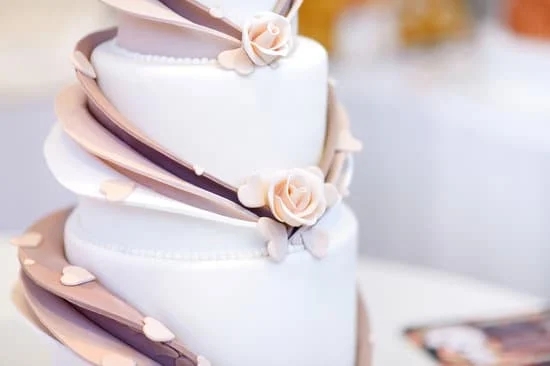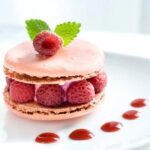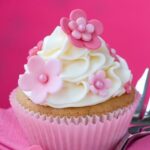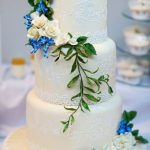When it comes to baking, what is used to decorate cakes plays a crucial role not only in enhancing the visual appeal of the confection but also in showcasing creativity and skill. Cake decorations serve as the final touch that transforms a simple cake into a masterpiece, delighting both the eyes and taste buds of those who indulge in it.
The art of cake decorating involves various techniques and ingredients that contribute to creating stunning designs. From intricate fondant creations to delicate buttercream piping, each element adds a unique flair to the finished product. Whether it’s a birthday celebration, wedding reception, or any special occasion, the decoration of a cake can make a statement and elevate the overall presentation.
In this article, we will delve into the world of cake decorating and explore some of the most popular methods and ingredients used by bakers and pastry chefs. From fondant to buttercream, royal icing to ganache, there are endless possibilities when it comes to adorning cakes with edible works of art. Join us on this creative journey as we uncover the secrets behind making cakes not only delicious but visually captivating as well.
Fondant
Working With Fondant
When working with fondant, it is important to prepare the surface of the cake by applying a thin layer of buttercream or ganache to help the fondant adhere smoothly. To roll out fondant without sticking, dust your work surface with powdered sugar or cornstarch.
Use a rolling pin to gently roll out the fondant into a thin, even layer before carefully draping it over the cake. Smooth out any wrinkles or air bubbles by gently pressing the fondant against the cake using your hands or a fondant smoother tool.
Creating Intricate Designs
One of the major attractions of using fondant for cake decoration is its ability to create intricate designs with clean lines and sharp edges. Fondant can be tinted with food coloring to achieve vibrant colors, and different tools such as cutters, molds, and texture mats can be used to add details like flowers, lacework, or geometric patterns.
Fondant decorations can also be shaped into 3D figurines or sculpted elements that bring a unique touch to any cake design. With practice and patience, decorators can master the art of working with fondant to elevate their cake decorating skills and create show-stopping confections.
Buttercream
When it comes to cake decorating, buttercream offers endless possibilities. Whether you’re looking to create a classic textured finish with a spatula or achieve precise details with piping tips, buttercream can do it all.
It serves as both an adhesive for attaching edible decorations like sprinkles or fondant accents, as well as a base for building up layers and textures on cakes. Additionally, buttercream is known for its ability to hold its shape well at room temperature, making it a reliable choice for outdoor events or warm environments where other icings may not hold up as effectively.
For those who enjoy experimenting with different flavors and textures in their cake decorating, there are endless variations of buttercream to try. From traditional American buttercream that uses powdered sugar or meringue-based Swiss or Italian buttercreams, each type brings its own unique qualities to the table.
With the right tools and techniques, anyone can master the art of using buttercream to turn a simple cake into an edible work of art. The versatility and adaptability of this icing make it an essential component in every decorator’s toolkit when aiming to create visually stunning confections that taste just as good as they look.
Royal Icing
One of the key advantages of royal icing is its stability, making it perfect for creating elaborate decorations that require precision and attention to detail. Bakers often use royal icing to produce fine details that cannot be achieved with other types of icings. Additionally, royal icing can be tinted with food coloring to achieve a wide range of vibrant hues, allowing decorators to unleash their creativity and customize their designs according to the occasion or theme.
When working with royal icing, decorators can use a variety of tools such as piping bags, tips, stencils, and even paintbrushes to create different effects on cakes. The consistency of royal icing can be adjusted by simply adding more powdered sugar if a thicker texture is desired for intricate designs or diluting the mixture with water for flooding larger areas. Overall, royal icing remains a popular choice among bakers and cake decorators for its versatility, beautiful finish, and timeless appeal.
| Royal Icing | Key Points |
|---|---|
| Versatile icing made from egg whites and powdered sugar | Ideal for intricate decorations like lacework and flowers |
| Stable consistency allows for precise detailing | Can be tinted with food coloring for customization |
| Various tools can be used with royal icing for different effects | Remains a popular choice among bakers and cake decorators |
Ganache
Using Ganache as a Filling
When using ganache as a filling for cakes, it’s essential to let it cool slightly before spreading it between layers. This will allow the ganache to thicken slightly, making it easier to work with and preventing it from seeping out of the cake. Once sandwiched between layers, the ganache will add moisture and richness to each bite, enhancing the overall taste experience.
Creating Ganache Frosting
To use ganache as a frosting for cakes, allow it to cool until it reaches a spreadable consistency. By applying a thick layer of ganache on top of your cake and smoothing it evenly with an offset spatula, you’ll achieve a glossy finish that is both visually appealing and indulgent. Ganache can also be whipped to incorporate air into the mixture, resulting in a lighter texture ideal for frosting cakes or piping decorative details.
In addition to serving as a filling or frosting, ganache can be heated slightly to create drips that cascade down the sides of cakes for an elegant touch. These drips not only enhance the visual appeal of the cake but also add contrast in texture and flavor. Ganache truly proves its versatility in cake decorating by providing both aesthetic beauty and deliciousness in every bite.
Edible Decorations
When it comes to decorating cakes, using edible decorations can truly elevate the visual appeal of a dessert. These edible items not only add texture but also provide a shimmering effect that makes cakes stand out. Whether you are looking to add a playful touch with colorful sprinkles or a touch of elegance with edible pearls, the options for decorating cakes are endless. Here are some popular edible decorations used by bakers and cake decorators:
- Sprinkles: Sprinkles come in various shapes, sizes, and colors, making them a versatile choice for adding a fun and festive element to cakes. From classic rainbow sprinkles to themed shapes like hearts or stars, sprinkles can be used to create eye-catching designs on cakes.
- Edible Glitter: Edible glitter adds a touch of sparkle and glamour to cakes, transforming them into dazzling desserts fit for any special occasion. Available in different colors and sizes, edible glitter can be dusted over frosting or fondant to create a magical effect.
- Edible Pearls: Edible pearls are perfect for adding an elegant and sophisticated look to cakes. These small round beads come in various colors and can be used to create intricate patterns, borders, or even floral arrangements on cakes.
In addition to these popular edible decorations, bakers can also explore other creative options such as edible flowers, gold leaf sheets, or even chocolate shavings. The key is to experiment with different textures and finishes to enhance the overall design of your cake. Remember that when it comes to cake decorating, the only limit is your creativity.
- Experiment with different edible decorations to add flair to your cake designs.
- Combine different textures and finishes for a visually stunning result.
- Don’t be afraid to get creative and try new ideas when decorating your cakes.
Piping Techniques
One of the most basic but versatile piping tips is the round tip, which can be used for writing, outlining shapes, or filling in areas with smooth lines. For creating intricate floral designs like roses or lilies, a petal tip is essential.
This tip allows decorators to achieve realistic flower petals by varying pressure on the piping bag as they rotate it around a central point. Additionally, leaf tips can be used to add foliage accents to floral arrangements or create festive wreaths around cake borders.
When it comes to borders and trims on cakes, there are specialized tips such as the star tip or the shell tip that can add texture and dimension to the edges of a cake. The star tip is commonly used for creating classic swirled patterns or rosettes along borders, while the shell tip adds a decorative scalloped edge that enhances the overall presentation of the cake.
By mastering different piping techniques and experimenting with various tips, decorators can achieve professional-looking results that will impress any recipient of their confectionery creations.
Whether you are a beginner or an experienced baker looking to enhance your cake decorating skills, practicing different piping techniques is essential for achieving beautiful and visually appealing designs on your cakes. With patience and creativity, you can use piping tools to transform simple cakes into works of edible art that are not only delicious but also stunningly decorated.
Remember, each cake you decorate is an opportunity to showcase your talent and express your unique style through intricate piped designs that will leave a lasting impression on anyone who sees – or tastes – your delectable creations.
Airbrushing
One of the advantages of airbrushing in cake decoration is the smooth and seamless finish it provides. Unlike traditional methods like spreading icing with a spatula or piping designs with buttercream, airbrushing allows for a more consistent and even application of color. This results in a flawless look that is especially appealing for modern or minimalist cake designs where precision is key.
In addition to adding color gradients and patterns, airbrushing can also be used to create stunning visual effects on cakes. For example, decorators can use metallic or shimmer colors to give cakes a glamorous sheen or create intricate lace-like patterns with delicate detail. The versatility of airbrushing opens up endless creative possibilities for cake decorators looking to elevate their designs with professional flair.
| Airbrushing Techniques | Brief Description |
|---|---|
| Ombre Shading | Creating a smooth transition from one color to another for a gradient effect |
| Stenciled Designs | Using stencils to apply intricate patterns or images onto cakes with precision |
| Marbling Effect | Blending multiple colors together to mimic the appearance of marble on cake surfaces |
Conclusion
In conclusion, cake decoration is an essential aspect of creating visually appealing and enticing cakes. The various techniques and materials discussed in this article, such as fondant, buttercream, royal icing, ganache, edible decorations, piping techniques, and airbrushing, all play a crucial role in transforming a simple cake into a work of art. Each method offers unique opportunities for creativity and skill to shine through, allowing bakers to showcase their talents and individuality through their cake designs.
The art of cake decorating requires patience, practice, and a keen eye for detail. Whether it’s mastering intricate designs with fondant or perfecting the smooth finish of ganache, each technique demands precision and dedication.
By experimenting with different methods and ideas, bakers can push their boundaries, hone their skills, and elevate their cake decorating game to new heights. It’s a journey of continuous learning and growth that allows for endless possibilities in designing stunning cakes that not only look beautiful but also taste delicious.
So next time you’re planning on baking a cake for a special occasion or simply to indulge your sweet tooth, don’t be afraid to get creative with your decorations. Explore new techniques, try out different tools, and let your imagination run wild.
After all, what is used to decorate cakes is more than just ingredients – it’s a reflection of your passion for baking and your artistic vision. So roll up your sleeves, pick up that piping bag or airbrush gun, and get ready to create mouthwatering masterpieces that will leave everyone amazed at your talent as a cake decorator.
Frequently Asked Questions
What Are the Things Used to Decorate a Cake?
Decorations for cakes can vary widely depending on the theme and design, but some common items used include frosting, icing, fondant, edible glitter, sprinkles, chocolate shavings, fresh fruit, flowers, and edible pearls. These decorations not only enhance the visual appeal of the cake but also add flavor and texture.
What Tool Is Used to Decorate Cakes?
A variety of tools are used to decorate cakes to achieve different effects. Piping bags and tips are essential for creating intricate designs with frosting or icing. Spatulas are useful for spreading frosting smoothly over the cake’s surface.
Stencils help in adding patterns or designs to cakes easily. Other tools like edible markers, sculpting tools, and airbrushes are used for more advanced cake decorating techniques.
What Ingredients Are Used to Decorate Cakes?
Ingredients play a crucial role in cake decoration as they determine the taste and appearance of the final product. Common ingredients used for decorating cakes include buttercream or royal icing for piping decorations and borders. Fondant is popular for creating smooth surfaces and intricate details on cakes.
Food coloring is used to add vibrant colors to frostings and decorations. Various extracts like vanilla or almond are added for flavor enhancement in icings and fillings. Additionally, fresh fruits, nuts, sprinkles, and edible flowers can be used as decorative elements on cakes.

Welcome to our cake decorating blog! My name is Destiny Flores, and I am the proud owner of a cake decorating business named Cake Karma. Our mission is to provide delicious, beautiful cakes for all occasions. We specialize in creating custom cakes that are tailored specifically to each customer’s individual needs and tastes.





